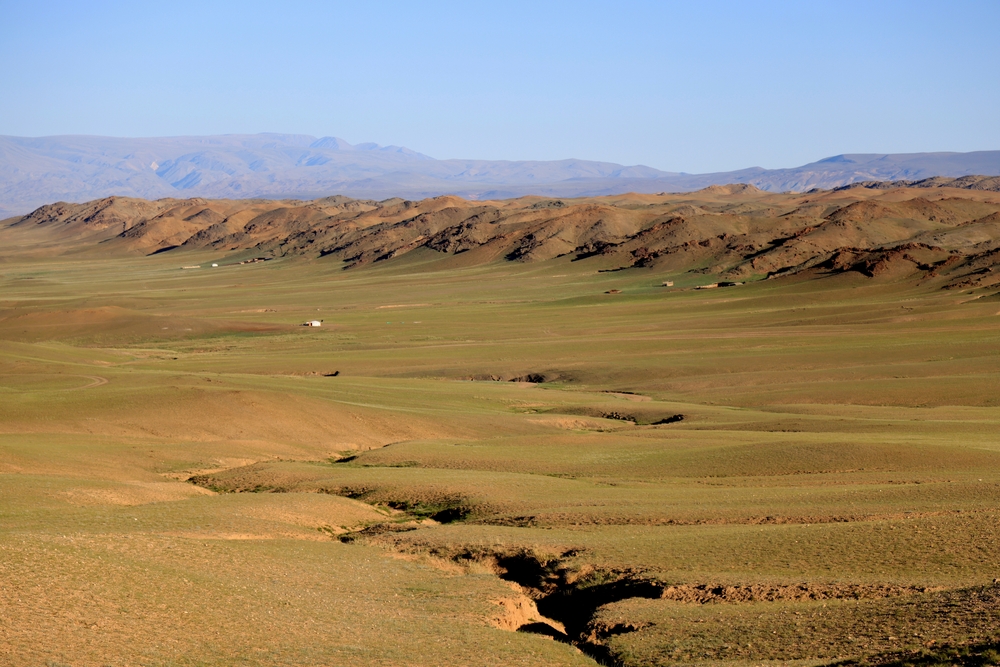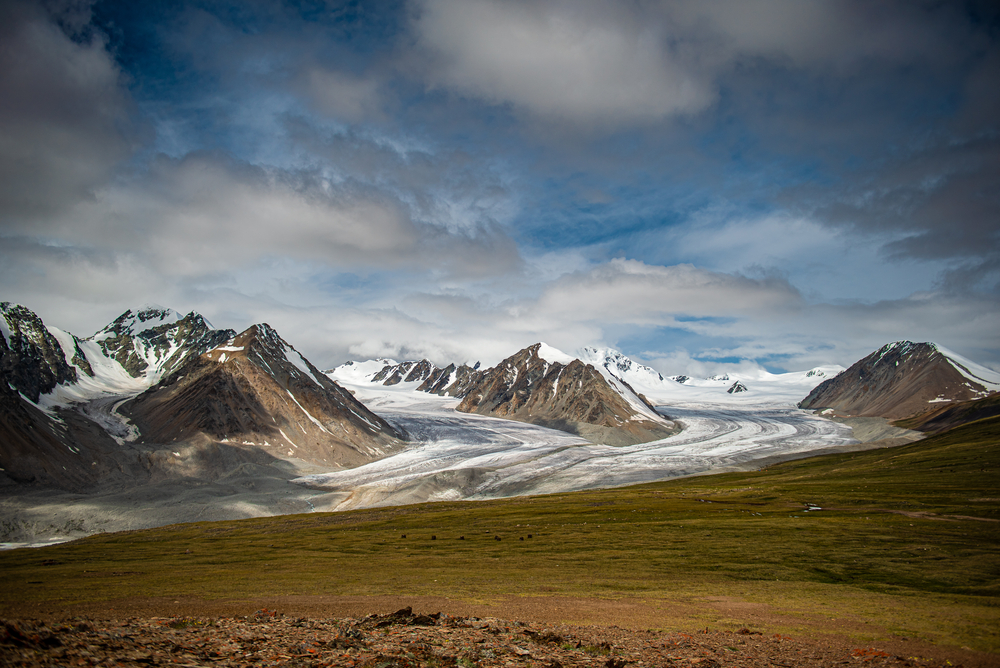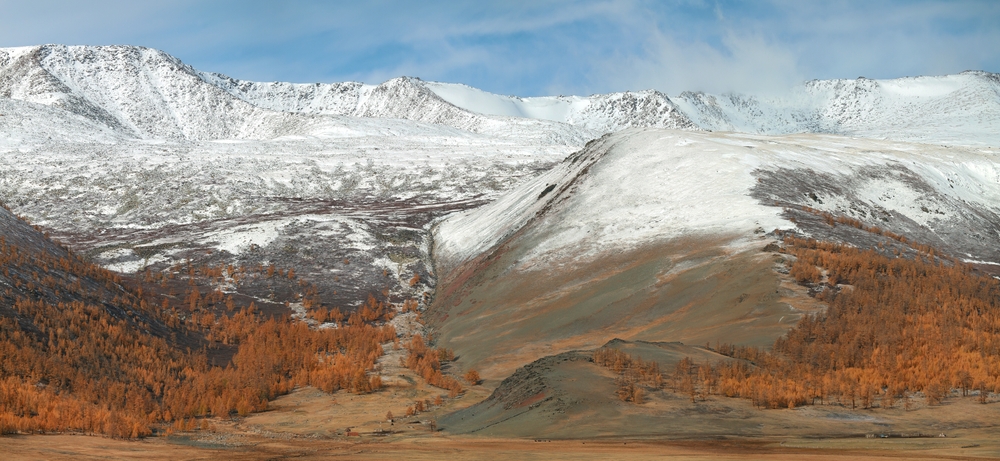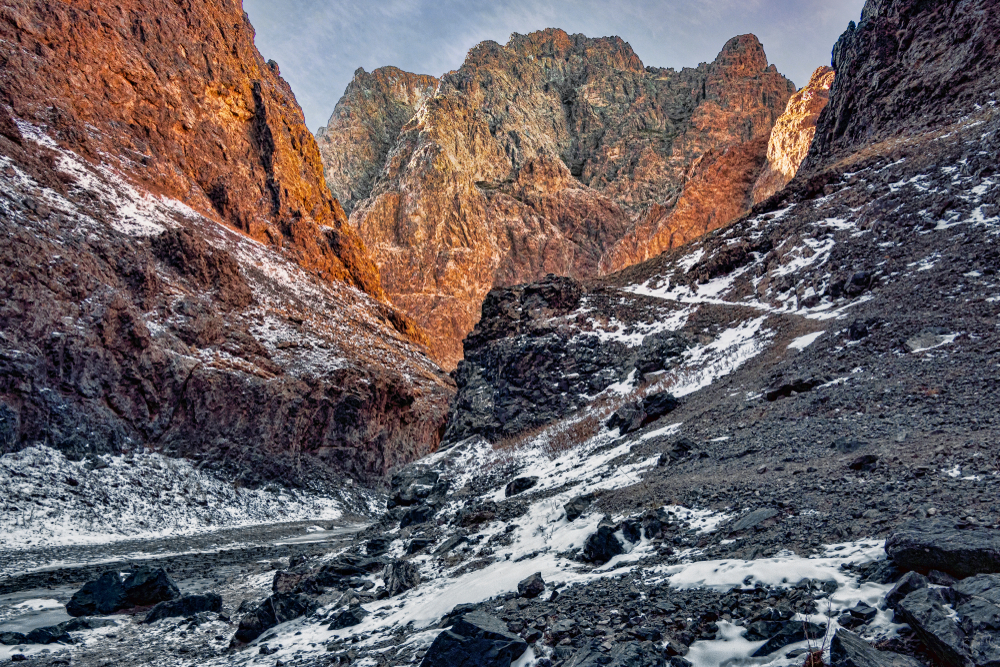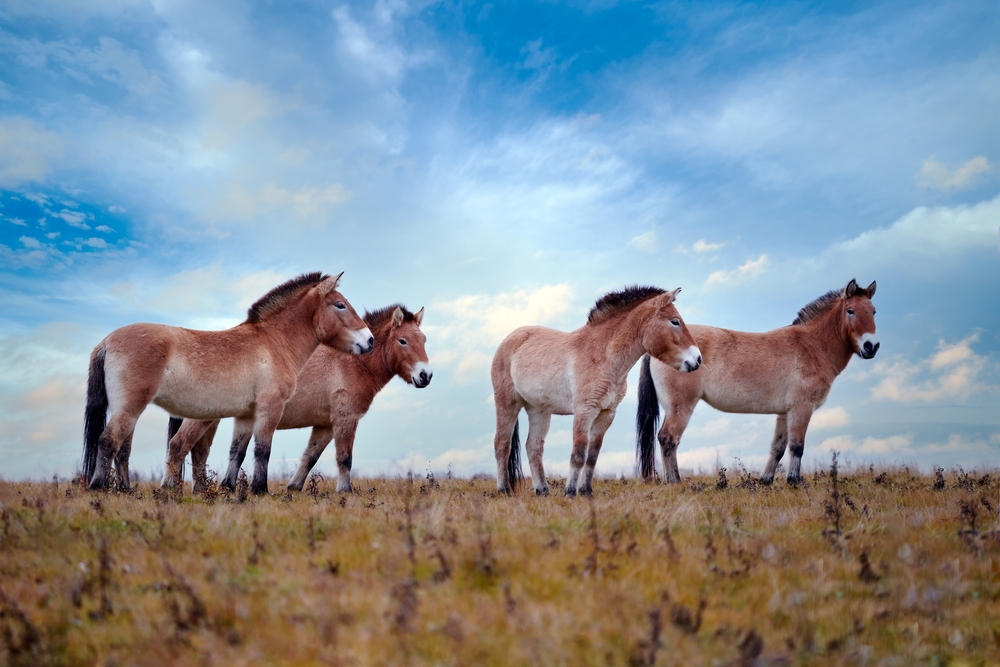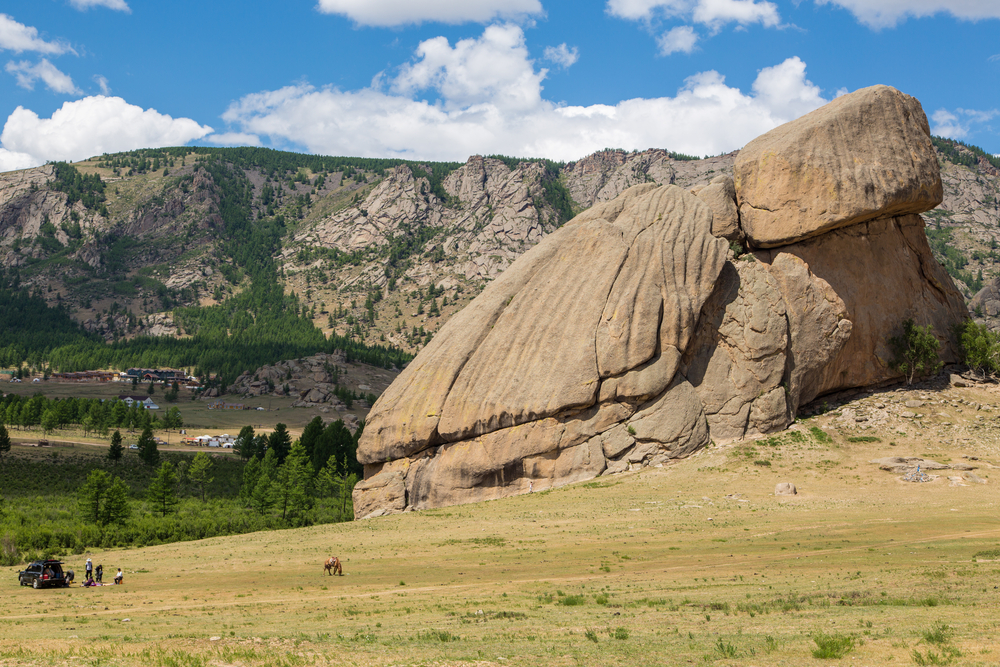Ikh Bogd Uul Overview
Ikh Bogd Uul National Park, situated in southwestern Mongolia, is a captivating expanse of natural beauty centered around the towering Ikh Bogd Mountain, which reaches a height of 12,467 feet (3,800 meters). The park spans approximately 2,247 square miles (5,821 square kilometers) and is named after the sacred peak of the Altai Mountain Range.
Known as “Ikh Bogd Uul” in Mongolian, which translates to “Great Holy Mountain,” the park is revered for its cultural and spiritual significance among the local communities. The park’s terrain is a blend of rugged mountain slopes, vast steppes, rocky outcrops, and arid desert-like regions, creating a striking mosaic of landscapes.
Ikh Bogd Mountain dominates the park with its snow-capped peaks and dramatic ridges, offering panoramic views of the surrounding plains and valleys. The area is also dotted with unique geological formations, including deep ravines, ancient rock carvings, and expansive dry riverbeds. Sparse but resilient vegetation such as Siberian elm, saxaul trees, and drought-resistant grasses thrive here, adapted to the harsh climate.
Wildlife in Ikh Bogd Uul National Park is diverse, despite the challenging environment. The park serves as a habitat for several iconic species, including the elusive snow leopard, argali sheep, and Siberian ibex, which are well-adapted to the steep and rocky terrain.
Small mammals such as marmots and pikas are commonly seen scurrying among the rocks. Birdwatchers might encounter the majestic golden eagle, lammergeier, or saker falcon soaring above the cliffs, while larks and wheatears inhabit the lower altitudes.
Visitors to Ikh Bogd Uul National Park are drawn to its serene beauty and opportunities for outdoor adventures. Hiking and trekking are popular ways to explore the rugged landscapes, with trails that lead to stunning vistas and hidden valleys. The park also offers chances for wildlife observation and birdwatching.
Cultural enthusiasts can visit petroglyph sites and traditional nomadic communities nearby, gaining insights into the region’s ancient history and enduring traditions. Photography is another favored activity, as the dramatic contrasts of light and shadow across the arid terrain provide endless inspiration.
Conservation challenges persist in the park, primarily due to climate change, poaching, and overgrazing by livestock, which put pressure on the fragile ecosystem. However, significant strides have been made in protecting the region’s unique biodiversity through collaborative efforts involving local communities, government initiatives, and international conservation organizations. The designation of Ikh Bogd Uul as a protected area reflects Mongolia’s commitment to safeguarding its natural heritage while promoting sustainable tourism and ecological balance.








































































